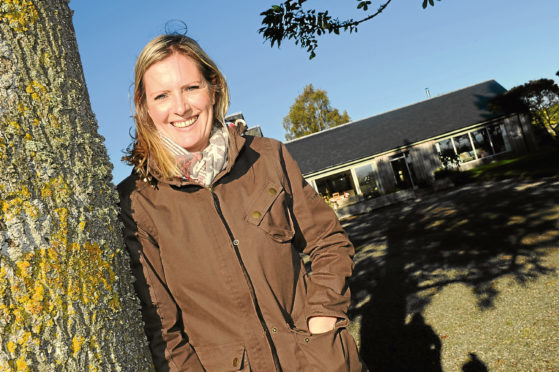Following Nick’s consultation with a grazing expert, he is diligently forging ahead with plans for the pasture here at Rootfield.
He has always been keen to have the cows out grazing for as long as possible, not only for the herd’s happiness but because it is cheaper than feeding them cake and silage.
The damp and cold northern climate isn’t usually conducive to extended grazing, yet the cows were out from April until the end of October last year.
Encouraged by this, Nick is committed to improving the quality of the pasture and from the several useful suggestions put forward by Bess, a knowledgeable and experienced Kiwi dairying expert who now resides in Dumfriesshire, he is planning to lay down tracks of artificial grass to prevent cattle poaching the pasture.
A serendipitous turn of events that saw Nick join a new committee for our local hall at the turn of the year meant that he inherited two unwanted, massive rolls of astro-turf, stashed under the hall stage. Once the weather improves towards the spring, he hopes to lay these en route to his grazing fields.
Another suggestion that Nick is also mulling over is the division of his pasture into 21 paddocks so he can implement Bess’s 24-hour grazing rotation.
This involves the herd grazing one paddock intensively for 24 hours before being moved on to the next paddock and so on over a three-week period.
The idea is that when the cows begin grazing at the start of the cycle, the grass is the height of a can of Coke, when the grass is at its most nutritious. This is known as the three-leaf stage – essentially when a stem of grass grows, it grows one, two, then three leaves and then it will seed.
The best, most nourishing grass is found at the top of the plant, at the three-leaf stage.
By the end of the 24 hours’ grazing, the grass will be the height of a golf ball. Then, by the time the cows graze all 21 paddocks and return to the first paddock, the grass will have regrown to between the two and three-leaf stage.
Traditionally, and to date on the farm, the cows have been put out to a field where they tend to graze only some of it then end up trampling the rest. The new paddock system will maximise the grazing platform at Rootfield.
Further insights were gleaned at Nick’s latest Rural Leadership Scheme during a trip to Edinburgh and visit to Holyrood.
The visit included a presentation by the clerk for the rural affairs committee, a tour of the parliament and a private audience with Rural Economy Secretary Fergus Ewing.
It is quite alien to Nick, as I’m sure it is for many of the other farming attendees on this valuable scheme, not only to be away from the farm for 48 hours but to have the time and space to think more laterally and strategically about his business as well as experience first-hand how government can influence the rural landscape for him personally and for the wider agricultural sector.
He is finding it fascinating and I can see just how enthusiastic and inspired he is each time he returns from one of the sessions.
Staying in this motivational vein, Nick is sending Rosie to the Ice Cream Expo in Harrogate this month where we hope she will be inspired by the latest industry innovations and trends in all things gelato.
We are also hopeful of recruiting a new full-time production assistant later this month to join our team.
Meanwhile, I am finding inspiration in the occasional glimpses of spring sunshine between the squally wintry showers.
I’ve said to my friend Zoe I’d take part in a 5k run with her and a group of friends next month, although I have to admit that I have yet to actually sign up. However, I have been spurred on by Daisy, who came home the other day and announced she had signed up for a cross-country run at school.
NEXT MONTH: eager for Easter
Rootfield Farm is on the Black Isle, 10 miles north of Inverness, where Jo lives with husband Nick, a fourth-generation dairy farmer, their daughters Daisy and Mollie, and 150 cows.
